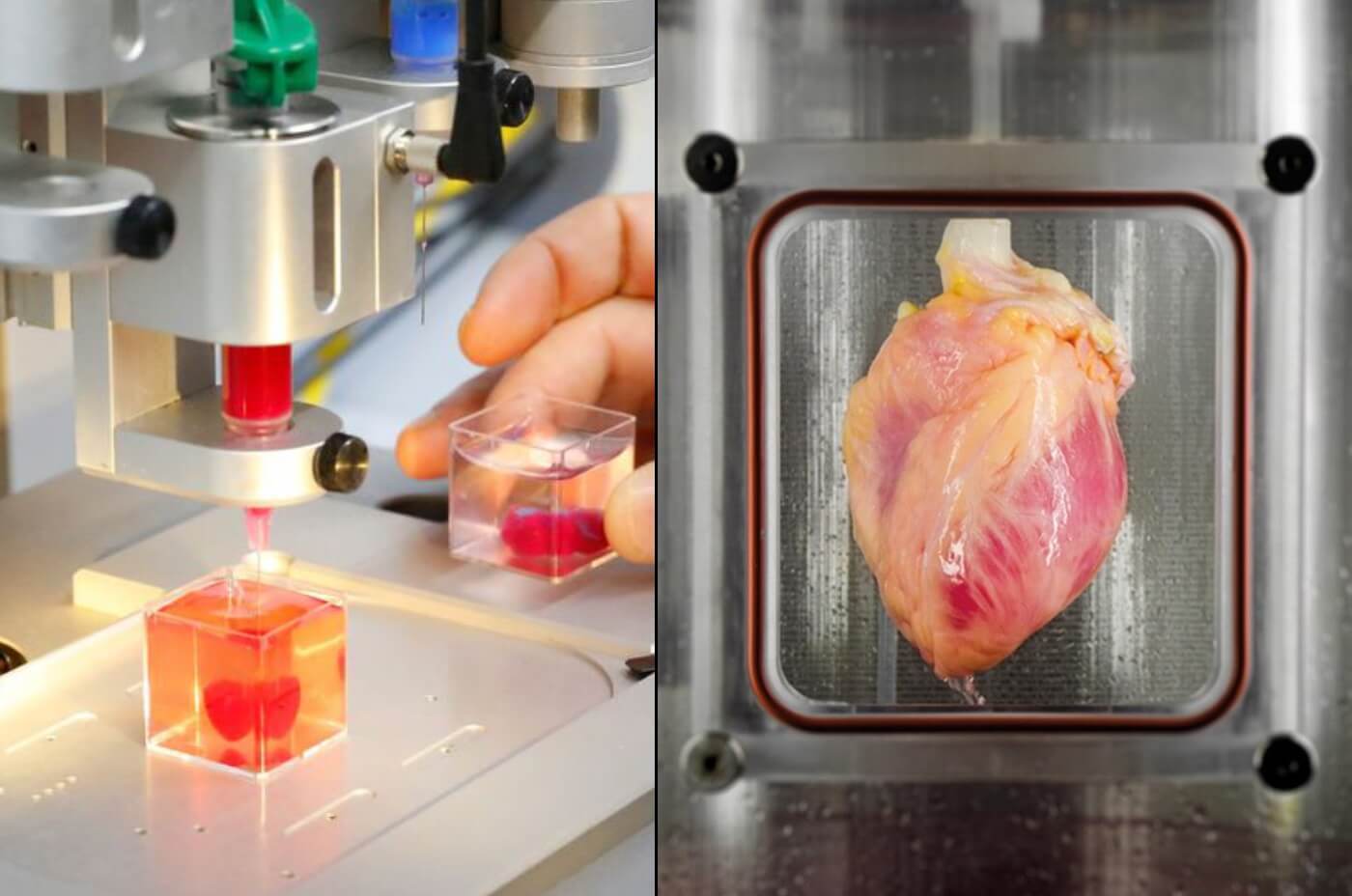Each year, over 25 million people suffer from heart failure. In the United States, only about 2,500 of the 4,000 people that are waiting for heart transplants will actually get them. This implies that almost half of the people that need a new heart for staying alive won’t be getting one. Good news comes in the form of different researchers creating a functional heart using stem cells.
A team of scientists from Massachusetts General Hospital and Harvard Medical School has been successful in growing a human heart using adult skin cells in a lab. Furthermore, a team of researchers from Tel Aviv University have managed to print the world’s first 3D vascularized engineered heart by making use of cells from the patient and biological materials.
Massachusetts General Hospital And Harvard Medical School
The study carried out by the scientists from Massachusetts General Hospital and Harvard Medical school, a heart was grown by making use of stem cells and was then provided an electric current to bring it to life. The team used 73 donor hearts that had been deemed unfit for transplantation. The team collected skin cells and then converted them into pluripotent stem cells – the kind of cells that be specialized into any part of the human body – by using messenger RNA. These stem cells were then developed into two kinds of cardiac cells.

The team then proceeded to strip away of cells on the donated hearts and replacing them using the transformed skin cells. Moving forward, the team mimicked the environment a human heart would generally grow within and infused the cardiac cells using a nutrient solution that helped growth. The cells were left for two weeks, after which the hearts were shocked using electricity, and they started beating. What’s more, is that the tissue inside the heart seems to be well-structured and functional. The study has been published in Circulation Research.

The team writes, ‘To show that functional myocardial tissue of human scale can be built on this platform, we then partially recellularized human whole-heart scaffolds with human induced pluripotent stem cell-derived cardiomyocytes. Under biomimetic culture, the seeded constructs developed force-generating human myocardial tissue and showed electrical conductivity, left ventricular pressure development, and metabolic function.’

The end goal is to grow a complete human heart that is capable of transplantation.
Tel Aviv University
The very first printed 3D vascularized engineered heart came from Tel Aviv University. It completely matches the immunological, cellular, biochemical, and anatomical properties of the patient since it has been created using the cells and biological materials of the patient. The team carried out a biopsy of fatty tissue that was taken from patients. In the next step, the cellular and a-cellular materials of the tissue were separated.

The cells were reprogrammed into becoming pluripotent stem cells and the extracellular matrix (ECM) – a 3D network of extracellular macromolecules such as glycoproteins and collage – was processed into a personalized hydrogel that would end up serving as the ink for the printer. Once the cells were mixed with this ‘ink,’ they were differentiated to cardiac or endothelial cells for the sake of creating patient-specific and immune-compatible cardiac patches with blood vessels, eventually leading to a complete heart. The findings of the teams were published in the journal Advanced Science.

Prof. Tal Dvir of TAU’s School of Molecular Cell Biology and Biotechnology, Department of Materials Science and Engineering, Center for Nanoscience and Nanotechnology and Sagol Center for Regenerative Biotechnology is the person who led the research for the study, and said, ‘This is the first time anyone anywhere has successfully engineered and printed an entire heart replete with cells, blood vessels, ventricles, and chambers…this heart is made from human cells and patient-specific biological materials. In our process, these materials serve as the bio-inks, substances made of sugars and proteins that can be used for 3d printing of complex tissue models. People have managed to 3d-print the structure of a heart in the past, but not with cells or with blood vessels. Our results demonstrate the potential of our approach for engineering personalized tissue and organ replacement in the future… at this stage, our 3d heart is small, the size of a rabbit’s heart. But larger human hearts require the same technology.’

Prof. Dvir further added, ‘The biocompatibility of engineered materials is crucial to eliminating the risk of implant rejection, which jeopardizes the success of such treatments. Ideally, the biomaterial should possess the same biochemical, mechanical, and topographical properties of the patient’s own tissues. Here, we can report a simple approach to 3d-printed thick, vascularized, and perfusable cardiac tissues that completely match the immunological, cellular, biochemical, and anatomical properties of the patient. We need to develop the printed heart further. The cells need to form a pumping ability; they can currently contract, but we need them to work together. Our hope is that we will succeed and prove our method’s efficacy and usefulness. Maybe, in ten years, there will be organ printers in the finest hospitals around the world, and these procedures will be conducted routinely.’


